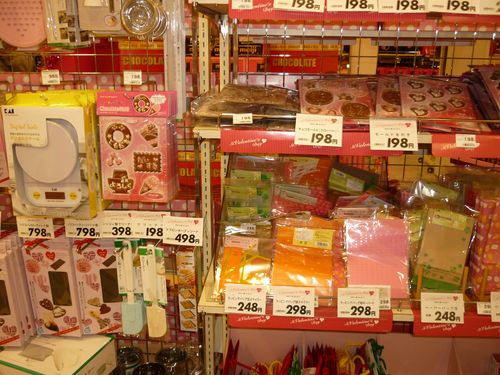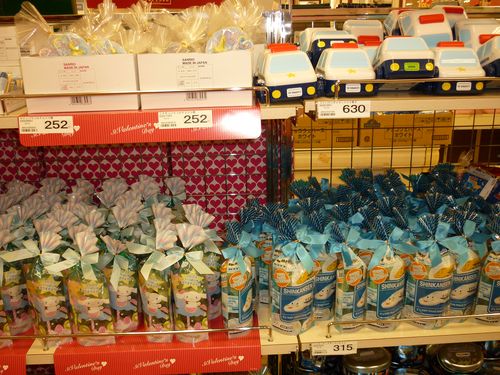This post was originally published on February 13, 2010. We’re pulling it out of the archives for all of you – especially our newer readers – to enjoy. Take note ladies, and don’t despair – your turn for some lovin’ comes next month, but in the meantime you can still tell your sweetheart “I love you” in Japanese. Happy Valentine’s Day to all our Okinawa Hai readers.
CONTRIBUTED BY JANNINE MYERS

Last week I talked about how one might say “I love you” in Japanese; this week I thought it would be fun to take that concept a little further and discuss Valentine’s Day traditions in Japan.
Valentine’s Day in Japan is all about giving chocolate, but with a slight twist; women do all the giving (traditionally). When the chocolate company Morinaga first promoted the idea of giving chocolates on Valentine’s Day, their media campaign focused on women being the sole givers. Supposedly the campaign was so successful because Japanese women, who at the time were quite conservative in voicing their affections, embraced the novel idea of giving chocolates as a way of saying “I love you.”
Nowadays however, women not only give chocolates as a gesture of love, but they also give chocolates to work colleagues and/or male friends, as a gesture of thanks or friendship. Chocolates given to friends and colleagues are called “giri-choco,” basically meaning “obligation chocolate.” A Japanese woman working in an office, might for example, buy up to ten small boxes of inexpensive “giri-choco.”
For the special man in her life, a Japanese woman can choose from various types of “honmei” (sweetheart chocolate); these chocolates are of much better quality than “giri-choco” and consequently cost a lot more. While “honmei” is still widely purchased, many women are now opting to surprise their loved ones with home-made chocolate treats. As you can see in the photo below, the department stores are catering to this trend.
Valentines Day baking supplies – there was an entire row full of items one might need for baking and presenting their gift
Other recently adopted trends include the addition of “gyaku-choco” (reverse chocolates), and “tomo-choco“ (friendship chocolates). “Gyaku-choco” is chocolate that men can buy for women, while “tomo-choco” is chocolate that can be given to friends (this is becoming a particularly popular custom amongst young girls). Chocolates are also available for the little guys and gals, as shown below.
Valentine’s Day in Japan has it seems, evolved into a tradition where anyone is deemed eligible to be a giver, receiver, or both. Consequently this now thriving tradition has become quite the economy booster, with more than half of Japan’s annual chocolate sales estimated to be made around this time of the year. But given the generous nature of the Japanese people and their tendency to give, it’s hardly surprising.
Happy Valentine’s Day! There is still a ton of chocolate out on the shelves if you haven’t yet picked up the gift/s you need for tomorrow…….





I was at a 100 yen store (the one by the convention center) yesterday and they had quite a selection of Valentine themed items too!